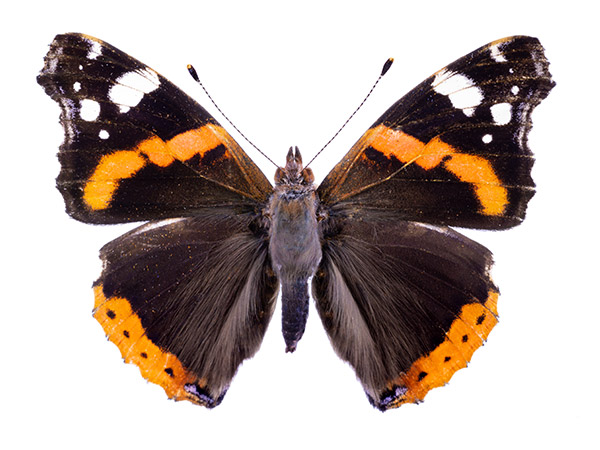binomial nomenclature
common name
Inachis io
European peacock, occhio di pavone
Description
Medium size butterfly (wingspan: 54-60 mm). Distinctive eyespot on wingtips. Resident from sea level up to about 2,500 meters of altitude, can be found in many types of environments such as edges of woods, glades, thin forests and gardens.
Behaviour
The adults (1 annual reproduction) flit from May to October, but live until the following year.
Nurse plant
Nettle
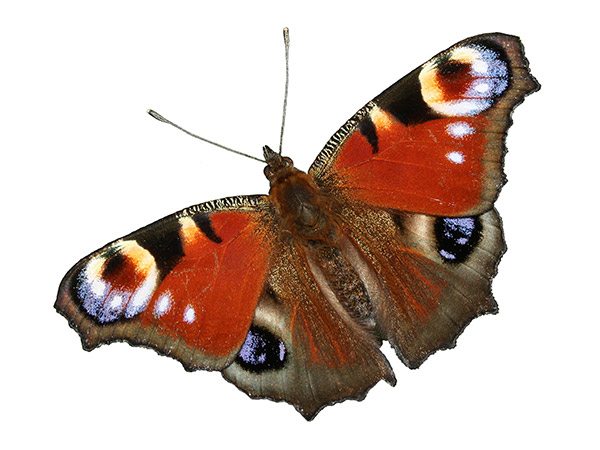
binomial nomenclature
common name
Polyommatus icarus
Common blue butterfly
Description
Small size butterfly (wingspan: 28-36 mm). It has a characteristic sexual dimorphism: males usually have wings that are blue above with a black-brown border and a white fringe, while the females are usually brown above with a blue dusting and orange spots. Very common species, found up to about 2.000 mt of altitude in different habitats: meadows, wide wooded glades, gardens, flowerbeds and kitchen gardens.
Behaviour
Further reproductions per year. Adults flit between April and October.
Nurse plant
Leguminous plants, including the Genus Trifolium.
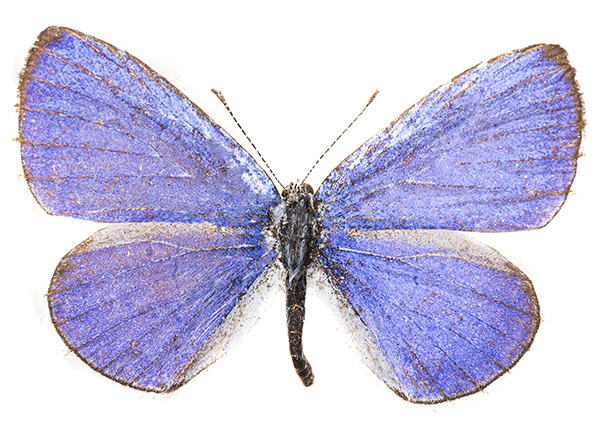
binomial nomenclature
common name
Celastrina argiolus
Holly blue
Description
Small size butterfly (wingspan: 23-30 mm). Sexual dimorphism with the female having a wide black band along the edge of the wings, clearly visible when these are open. Common species, resident from the plain to the 1500 mt: easily found near hedges and woody glades.
Behaviour
2 - 3 generations a year, with eclosions between March and August. Second generation chrysalises are wintering, they spend all the winter in the cocoon.
Nurse plant
The eggs are laid mostly on the holly in spring and on the ivy in summer.
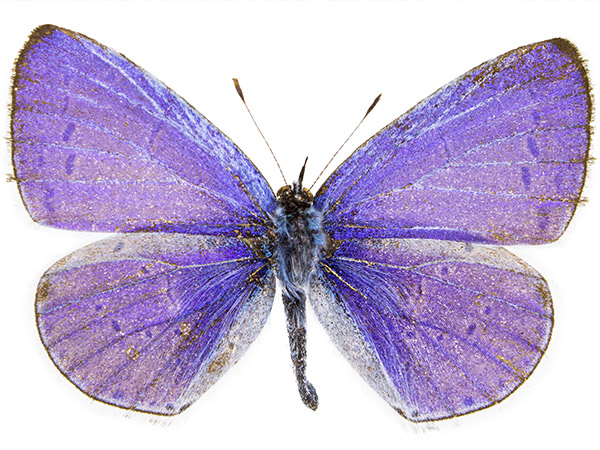
binomial nomenclature
common name
Aporia crataegi
Black-veined white
Description
Butterfly with white livery, characterized by boldly black veined wings (wingspan: 45-60 mm). The wings of the male are white with black veins, the female has brown veins. Resident in open environments, is also located near streams, from sea level up to over 2,000 mt.
Behaviour
Adults fly, between May and July, in a single generation.
Nurse plant
Hawthorn, blackthorn, rosehip and several fruit trees.
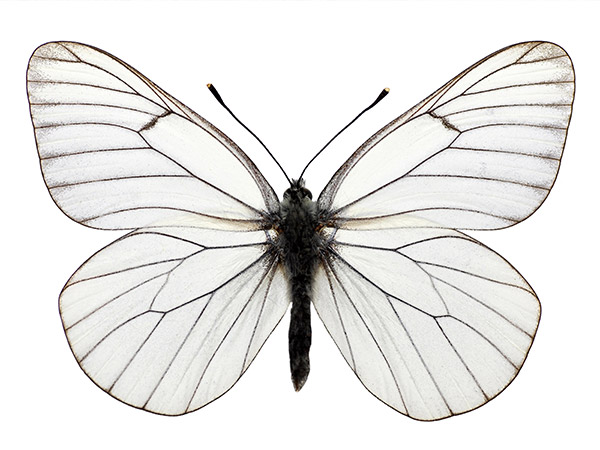
binomial nomenclature
common name
Macroglossum stellatarum
Sphinx Moth, Hummingbird hawk-moth
Description
(Wingspan: 50 mm). Diurnal moth, is equipped with a flight control exceptionally efficient that allows it to stand hovering in front of the flower from which it seals the nectar. It has a particular long proboscis. Found in gardens, meadows, thickets, and at the edges of woods.
Behaviour
Three reproductions per year, between April and October. The adult winters at the southern latitudes.
Nurse plant
Honeysuckle, valerian, vervain, viola, lavender.
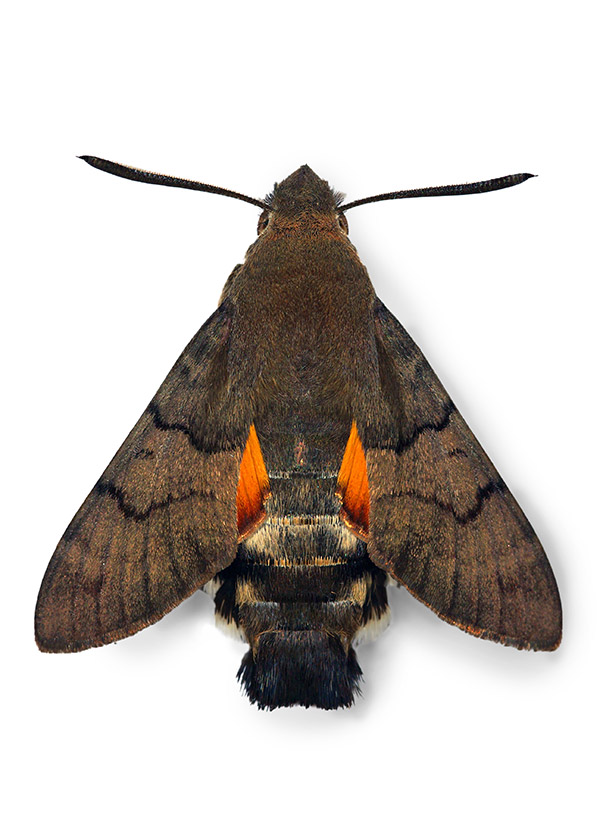
binomial nomenclature
common name
Vanessa cardui
Painted lady
Description
Wingspan between 54 and 58 mm. Maybe the only diurnal butterfly present in all continents except Antarctica and South America. Migratory species with fast and powerful flight. Found in every type of environment, preferring the uncultivated ones.
Behaviour
Adults flit from April to October (2 reproductions per year).
Nurse plant
Thistle, nettle.
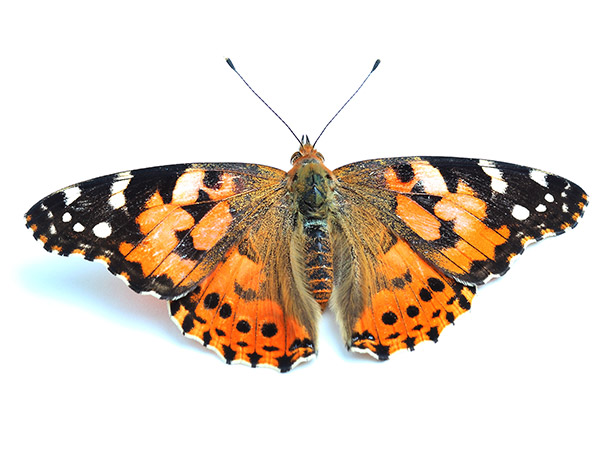
binomial nomenclature
common name
Gonepteryx rhamni
Common brimstone
Description
Medium size species (wingspan 52-60 mm). Sexual dimorphism: males have yellow wings while females have greenish-white wings. Adult brimstones are leaf-mimics, this allows them to blend in with their surroundings. Resident everywhere, from meadows to open woods, in gardens and cities.
Behaviour
Can be observed from February to November. Adults winter hiding among the leaves of plants such as ivy and holly.
Nurse plant
Buckthorn (Frangula alnus)
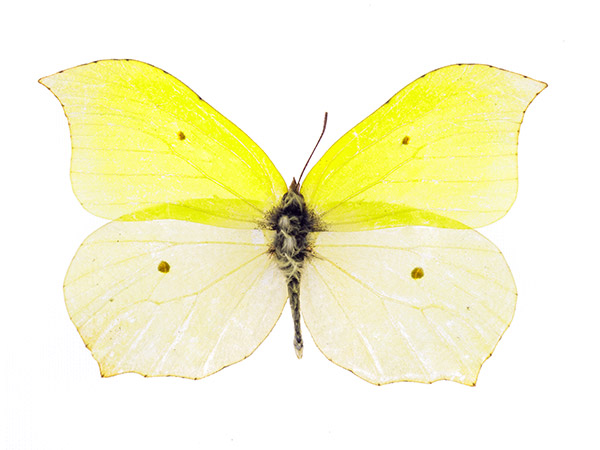
binomial nomenclature
common name
Iphiclides podalirius
Swallowtail
Description
Presence of blue crescent markings in hind wings, with an oblong, orange spot at the back corner and a relatively long tail. The wingspan is quite important, up to 8 cm. Prefers hilly areas, orchards, sparse woods located in the plains, meadows and gardens.
Behaviour
2-3 reproductions per year. Adults flit from March to September.
Nurse plant
The larva feeds on various shrubby species, including blackthorn and hawthorn.
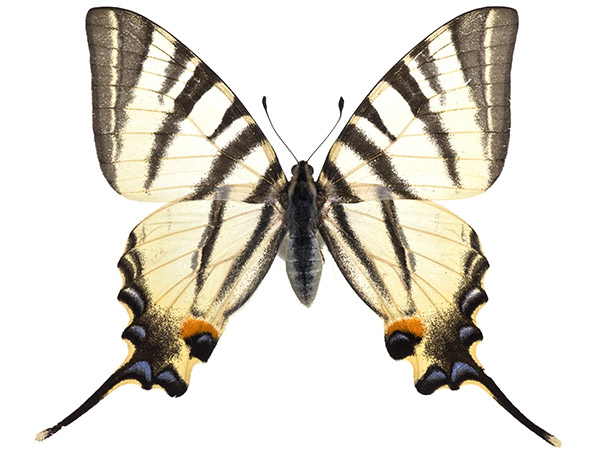
binomial nomenclature
common name
Agrius convolvuli
Convolvulus hawk-moth
Description
(Wingspan 80-120 mm). Moth able to move the wings very quickly, with the skill to nourish and to lay its eggs remaining in flight. When perching, it closes the front wings like a roof, covering the rear wings and the abdomen. The caterpillar feeds from July to September, and with the cold season digs in the ground a tunnel where it turns into chrysalis to overcome the winter.
Behaviour
Adults flit between June and September. 2 reproductions per year.
Nurse plant
Convolvulaceae, sunflowers.
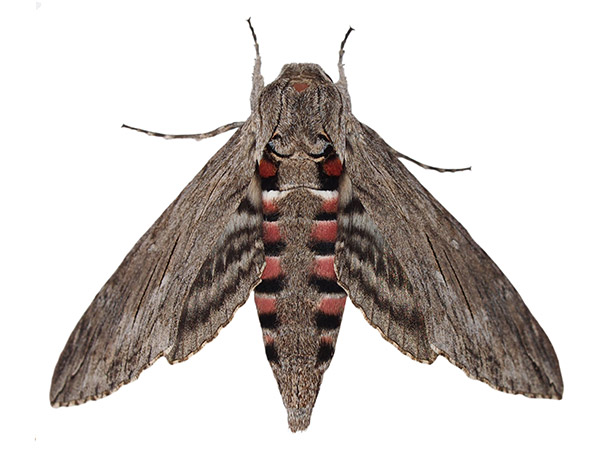
binomial nomenclature
common name
Vanessa atalanta
Red admiral
Description
Medium size butterfly (wingspan 56-63 mm). The characteristic livery allows it to camouflage with the bark of the trees and with the shrubs. Migratory species, located in every type of environment, from sea level to 2000 mt of altitude. Can be commonly found in meadows, in wooded glades, along shrubby bands and in gardens.
Behaviour
Adults flit from June to October (2 reproductions per year). It is not unusual to observe red admirals flying in full winter during mild days.
Nurse plant
Nettle
